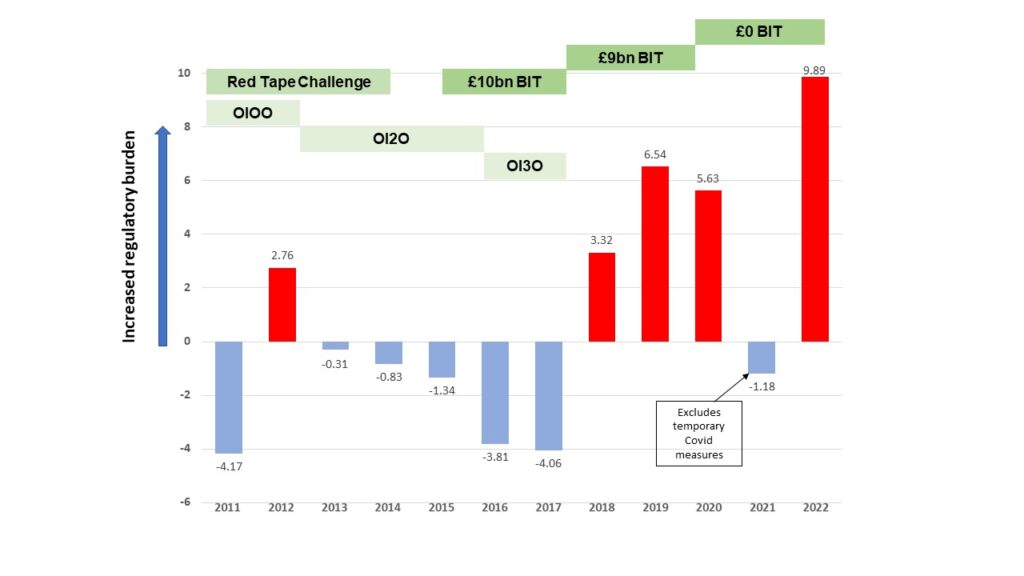Stephen Gibson’s paper on Reducing the Burden of Government Regulation has been published by the Social Market Foundation. It reviews the effectiveness of different approaches to reducing regulatory red tape and draws out 5 important lessons for future Government initiatives:
– The need for strong political support for initiatives to reduce regulation;
– The importance of independent validation of regulatory burden calculations;
– Ensuring significant regulations are not excluded from the framework;
– Focussing on the small number of regulations that generate most of the regulatory burdens; and
– Involving stakeholders in the process.
The Foreword from John Penrose MP says that: “The very first graph [see below] of this excellent and well-informed paper should give every policy-maker, regulator and public official a sharp pain in the chest“. The graph shows how previous measures including the Red Tape Challenge (RTC) and One-In-One-Out (OIOO) followed by One-In-Two-Out (OI2O) and OI3O managed to contain the growth of regulatory costs, while the current approach based on the Business Impact Target (BIT) has seen those costs balloon. Making announcements about ambitions to reduce regulatory costs without an ongoing commitment from Ministers to deliver on those ambitions was never going to work. It is hoped that the Government will learn the lessons from past failures to improve the Better Regulation Framework – the potential benefits of getting it right are huge.

The Retained EU Law Bill currently going through Parliament risks failing to heed the lessons of past initiatives. The Bill, which will automatically scrap every piece of retained EU law that is not reviewed and retained before December 2023 is motivated by a political desire to ‘get Brexit done’. It risks removing regulations without thinking through their value and missing a ‘golden opportunity’ to properly consider the costs and benefits involved in order to improve business regulation. Extending the December deadline, providing clear guidance around the internal processes to be used to assess the retained EU regulations, together with a properly managed and resourced assessment and review programme would be a much better way forward.
Stephen Gibson would like to thank the Mossavar-Rahmani Center for Business and Government at the Harvard Kennedy School for their support in developing this paper, and in particular Professors Jason Furman, Richard Zeckhauser and John Haigh. He would also like to thank the Regulatory Policy Committee for their thoughtful observations on the effectiveness of regulatory burden reduction measures.
The paper is available here